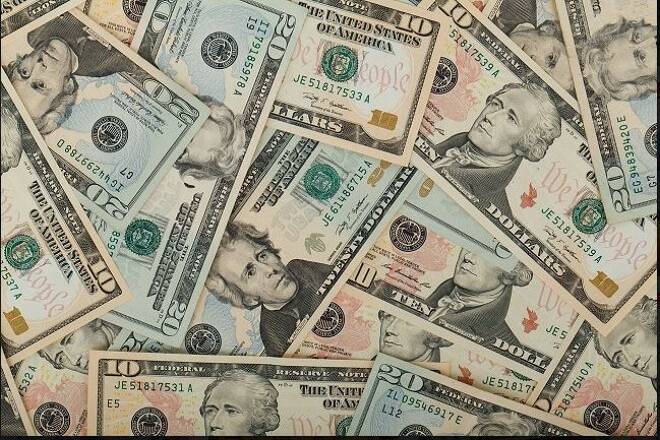Advertisement
Advertisement
Dollar Pressured by Weak Economic Data, Concerns Fed Will Soften Monetary Policy
By:
According to the WSJ, members of the U.S. Federal Reserve are reportedly debating whether to signal a “wait-and-see” approach after a probable hike to the central bank’s benchmark rate at its December meeting.
Economic data and U.S. Federal Reserve member comments controlled the price action in the U.S. Dollar last week. Economic data came in on the weak side last week, raising concerns over economic growth. Dovish Fed comments as well a Wall Street Journal report suggested the Fed may be considering the pace of future rate hikes. Geopolitical events and wild stock market swings also led to bouts of heightened volatility.
U.S. Economic Data
While most traders were focusing on Friday’s U.S. Non-Farm Payrolls report and other outside events, a couple of stronger than expected reports slipped through nearly unnoticed. ISM Manufacturing PMI came in at 59.3, better than the 57.5 forecast and 57.7 previous reading. ISM Non-Manufacturing PMI, also beat the forecast, increasing to 60.7 from 60.3. It also beat an estimate of 59.1.
A weaker-than-expected U.S. nonfarm payrolls report setoff volatile reactions in several markets on Friday amid concerns the U.S. Federal Reserve may have to consider curtailing its plans to raise rates aggressively in 2019. The slow job growth suggests that economic growth may be losing steam.
According to the U.S. Labor Department, Nonfarm Payrolls increased by 155,000 for November while the Unemployment Rate again held at 3.7 percent, its lowest level since 1969. Economists were looking for payroll growth of 198,000 and the jobless rate to remain changed. Average hourly earnings rose last month, but the increase didn’t raise fears about an overheating economy. Average hourly earnings rose at a 3.1 percent pace from a year ago. The monthly earnings gain of 0.2 percent fell short of estimates for a 0.3 percent increase. The average work week edged lower by 0.1 hours to 34.4 hours.
Wall Street Journal Report
According to the WSJ, members of the U.S. Federal Reserve are reportedly debating whether to signal a “wait-and-see” approach after a probable hike to the central bank’s benchmark rate at its December meeting. The WSJ said as part of the Fed’s emerging “data dependent” plan, it could chose to pause the regular quarter-point increases to the federal funds rate and not hike in March.
Fed Minutes and Fed Member Remarks
Minutes from the Fed’s November meeting showed that members are wary of the effect trade tensions and corporate debt could have on economic growth, a sign some took to mean that the FOMC could pause regular rate increases in 2019.
U.S. Federal Reserve Vice Chair Richard Clarida made clear in a discussion about inflation on December 3 that he remains more concerned about falling short of the central bank’s percent objective than running above it.
Inverted Yield Curve
The dollar was also pressured by an inverted Treasury yield curve. This is bearish for the dollar because it tends to point toward potential economic trouble ahead.
Australian Dollar, New Zealand Dollar and Japanese Yen
Extreme stock market volatility encouraged investors to dump risky currencies like the Aussie and the Kiwi, while driving up demand for the safe-haven Japanese Yen.
Stocks traded in both directions before settling sharply lower for the week. Helping to underpin equities was the hope the Fed would limit the number of future rate hikes. Concerns over a possible escalation of the trade dispute between the United States and China put a cap on any rallies, and drove the major indexes sharply lower.
Early in the week, debate over the start date of the truce on additional tariffs by the US and China fueled a choppy, two-sided trade. Later in the week, the arrest of the CFO of Huawei, a major Chinese company, triggered an acceleration to the downside as it created more uncertainty over trade negotiations. Demand for risk continued to decline on Friday after the Wall Street Journal reported federal prosecutors are expected to bring charges against Chinese hackers allegedly trying to break into technology service providers in the U.S.
There were no major reports last week from New Zealand and Japan. The downward direction of the NZD/USD and USD/JPY was primarily driven by the weakness in the stock market and lower demand for risk. In Australia, not only was the Aussie pressured by the risk off scenario, but also by a dovish central bank and weak economic data.
The Reserve Bank of Australia extended its record-breaking streak of inaction on rates, holding the official cash rate at 1.5 percent for a 28th consecutive month ahead. The RBA maintained a positive stance on the labor market, citing a pick-up in wages growth last month. However, it cooled its language around trade noting “some signs of a slowdown” and declines in commodity prices.
Australian Retail Sales came in at 0.3% as expected. The previous report was revised down to 0.1%.
The Aussie plunged after GDP came in well-below expectations. This reduced the odds of a sooner than expected rate hike by the RBA. Quarterly GDP came in at 0.3%, missing the 0.6% forecasts. It was also much lower than the previously reported 0.9%.
About the Author
James Hyerczykauthor
James Hyerczyk is a U.S. based seasoned technical analyst and educator with over 40 years of experience in market analysis and trading, specializing in chart patterns and price movement. He is the author of two books on technical analysis and has a background in both futures and stock markets.
Advertisement
